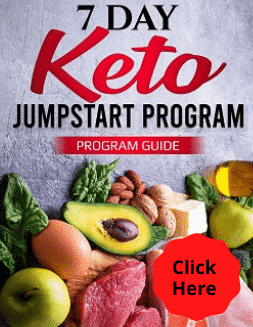
You may have come across the Paleovedic diet online and wondered what this diet is all about. From its name, you can tell that this diet is most likley a version of the Paleo diet.
Like keto, the Paleo diet requires eating primarily lean meats, fish, fruits, and vegetables, nuts, seeds and cutting out processed foods, including refined carbs.
It’s based on the foods which were thought to be eaten by the hunters and gatherers of the Paleolithic era.
Related reading: Paleo vs. Keto: Which is Best for Weight Loss?
But what about Paleovedic? Is this also a type of low carb diet? How does it differ from keto? So, in this article, let’s find out more about this diet and understand how it compares with the keto diet.
Related reading: Is The Paleo Diet A Low-Carb Diet?
Related reading: What Can You Eat On Keto? Find Out Here
What is the Paleovedic Diet?
The Paleovedic diet combines the Paleo diet and Ayurvedic teaching, which encourages eating colorful and nutrient-dense whole foods. Although it might sound simple to follow, it is not just a manner of increasing your intake of fruits and veggies.
Instead, the diet also involves focusing on eating nutritious foods personalized according to your Ayurvedic body type or “dosha”. These doshas are believed to be responsible for our emotional, mental, and physiological health.
Ayurveda
Ayurveda is an alternative form of medicine with historical roots in India. Although it has been called pseudoscientific, the practice is in fact based on time tested theories proven by observation, trial and error and experimentation.
Clinical research done at reputed Ayurvedic institutes has been published in medical jounala all over the world.
Rather than supressing symptoms with drugs as orthodox medicine does Ayurveda Ayurveda focuses on finding the underlying cause of your disease.
The Ayurvedic diet consists of dals, whole grains, and ghee (clarified butter), with very little good quality meat and fish.
The Paleovedic diet is basically a personalized version of the Paleo diet. Akil Palanisamy, MD, a Holistic Health Practitioner who founded The Paleovedic Diet, thinks that the Paleo diet is not a realistic long-term way of eating unless you tweak it according to your body’s constitutional needs.
So, he recently published his book, The Paleovedic Diet. According to him,
“I was seeing patients who were following Paleo but doing themselves harm by eating foods that weren’t right for their body type or following a diet excessively low in carbs. That’s when I started combining it with the principles of Ayurveda.”
In the book, there is a checklist where you can figure out what your dominant “dosha” is according to your emotional and physical characteristics. He then offers recommendations on how to tweak the Paleo diet to meet your needs, such as what you need to cut out and what you should eat instead.
For instance, if you are a “Vata,” which consists mainly of the two elements – air and space, and characterized as being light, cold, and a bit anxious, you should eat more warming and grounding foods. Examples are meats, fats like ghee, and spices like ginger and turmeric.
How Does the Paleovedic Diet Compare with Keto?
As explained above, the Paleovedic diet is a type of Paleo diet. Paleo is often being compared to keto due to their similarities. Both the Paleo and keto diets rely on whole-food sources of nutrients.
These are the type of foods that undergo minimal processing. And both diets strongly encourage that you eat whole foods like good quality meats, fresh fish, fresh vegetables, and nuts.
Both the Paleovedic and keto diets are a healthier way to lose weight. For some people, the Paleovedic diet may be easier to follow. It allows for more flexibility of food choices while also having more options for obtaining various nutrients that the body specifically needs.
With the keto diet, the goal is to put your body into a state of ketosis by eliminating carbs from your diet. The restrictive nature of keto can be challenging for some people to follow, which is why they might prefer Paleo over keto.
Related reading: How Ketosis Works for Burning Fat Faster?
Unlike keto, which focuses on eating high-fat and protein-rich foods while restricting carbs, the Paleovedic diet is not mainly about avoiding carbs. In the book, the author delves deeper into eating nutrient-rich foods, including herbs, spices, fruits and veggies. It also follows the Ayurvedic approach to personalizing the diet.
Related reading: Best Protein for Weight Loss
With a goal to offer a long-term solution to eating healthy, the Paleovedic diet is more personalized than keto. With keto, everyone is required to follow a diet that’s strictly low in carbs.
However, the Paleovedic diet is tweaked according to one’s personal needs. Since keto tends to be excessively low in carbs, some people will feel unsatisfied and weak. But with the Paleovedic diet, you can tweak the diet to keep your body in balance, depending on your dosha.
What To Eat On a Paleovedic Diet?
With the keto diet, your diet consists mainly of foods that are high in fats and proteins. It requires you to eliminate high-carb foods from your diet and that you’re restricted to eating less than 50 grams of carbs per day.
Related reading: Keto Diet Fats : Best and Worst To Eat
But what about the Paleovedic diet? What are the types of foods that you should eat if you decide to follow this diet?
Followers of the Paleovedic diet are required to eat mostly nutrient-dense foods. These consist mainly of dark-colored fruits and veggies. As mentioned in the book, the deeper the color, the more phytonutrients these foods have, and this is good for the body.
In fact, the book also encourages eating the skin of fruits and vegetables since most of the antioxidants are found there. An excellent example of this is the beetroot, which is rich in antioxidants and can help with the healthy functioning of the liver.
Since spices are significant in Ayurvedic medicine, you must also incorporate them into your Paleovedic diet. Spices are nutrient-dense and come with many health benefits. They minimize inflammation and improve the body’s overall health and wellbeing. Above all, they can make your foods taste great.
Final thoughts
Overall, the Paleovedic diet is a highly nutritious way of eating that will leave you full and satisfied. Since it is highly personalized and emphasizes maximizing intake of nutrients, it’s more realistic to follow even in the long-term.
It eliminates several aggravating foods such as grains and dairy that can benefit those suffering from autoimmune and digestive disorders.
Of course, the decision of whether to follow the Paleovedic or keto diet is a personal choice. Some people may find that the keto diet is better for them in terms of losing weight. But regardless of which diet you wish to follow, consider consulting with a health expert who can offer advice on the best diet that can work for you.









